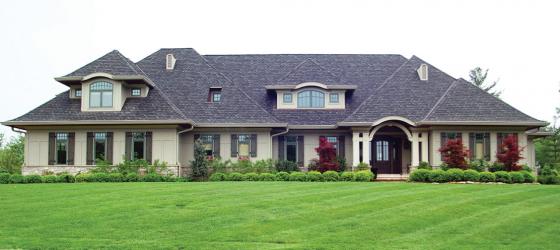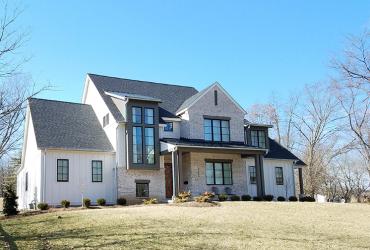Evoking thoughts of comfort, family, fertile fields and the aroma of baking bread, the farmhouse is more than a structural design. It’s a feeling.
The basic farmhouse concept originated in Europe and Scandinavia, subsequently migrating to Canada, then to Colonial America. Wealthy Southern landowners built magnificent plantation houses during the pre-Civil War era, but life for the average American farm family was harsh. Their homes were small, low-ceilinged and dark, except for the kitchen where most of the daily indoor activity took place.
As city dwellers began moving away from congested urban centers in the late 1800s, they often fashioned their country homes after European villas. But with the introduction of electricity and indoor plumbing to outlying areas in the 1930s, American farmhouse design came into its own. Adaptable to a huge range of architectural styles and décor—from traditional to rustic, European, Scandinavian, Coastal, even Boho, the nostalgic charm of farmhouse styling continues to appeal to today’s homeowners.
It would take pages to describe the countless variables associated with farmhouse design, but the focus is always on comfort and functionality. Among the most common elements are one-or-two-story elevations; rectangular or square floor plans, light or neutral exterior colors, large and wrap-around porches, sizable windows and roomy kitchens. Classic interiors typically feature wood-plank flooring, beamed ceilings, fireplaces, ample comfy furniture, antiques and vintage accessories.
In the St. Louis region, farmhouse designs with a French or Italian flavor have been especially popular. French exteriors tend to be simple in shape but elegant with natural stone or painted brick masonry, contrasting shutters, dormer windows and lush formal landscaping. Interior décor is likely to emphasize pastels and florals, plaster walls, ornately detailed furniture, dramatic chandeliers and gilded or distress-painted appointments.
Italian-styled elevations can vary widely, but may include a cupola and either a grand porch or front courtyard. Exteriors emphasize natural materials—stone, stucco, wood and/or terracotta roof tiles, deep eaves and brackets, wood shutters and elongated or arched windows. Inside, the focus is on contrast and texture—a neutral, earthy palette, dark-stained beams, stone or tile floors, rustic fireplaces, dark wood and leather furnishings and wrought-iron fixtures
In recent years, the Modern Farmhouse has become a similarly popular trend. More streamlined and minimal, exteriors are usually light-colored and can incorporate various architectural motifs. The most significant innovation is the open-concept floor plan with a spacious island kitchen at the heart of the activity spaces. Large windows capitalize on the views, and expansive covered porches or decks invite outdoor enjoyment. Interior walls are usually white or off-white, sometimes shiplap, and complemented by varnished or lightly stained hardwood flooring. For a “homey” feel, kitchens most often have wood or granite countertops, a farmhouse sink and wood cabinetry, frequently glass-fronted. Elsewhere, the décor can range from contemporary to transitional or eclectic, and mixed metals and mid-century modern pieces are common features.
Well-suited to almost any location, today’s farmhouse design offers owners an incredible variety of style options, from chic and sophisticated to casual and relaxed.







